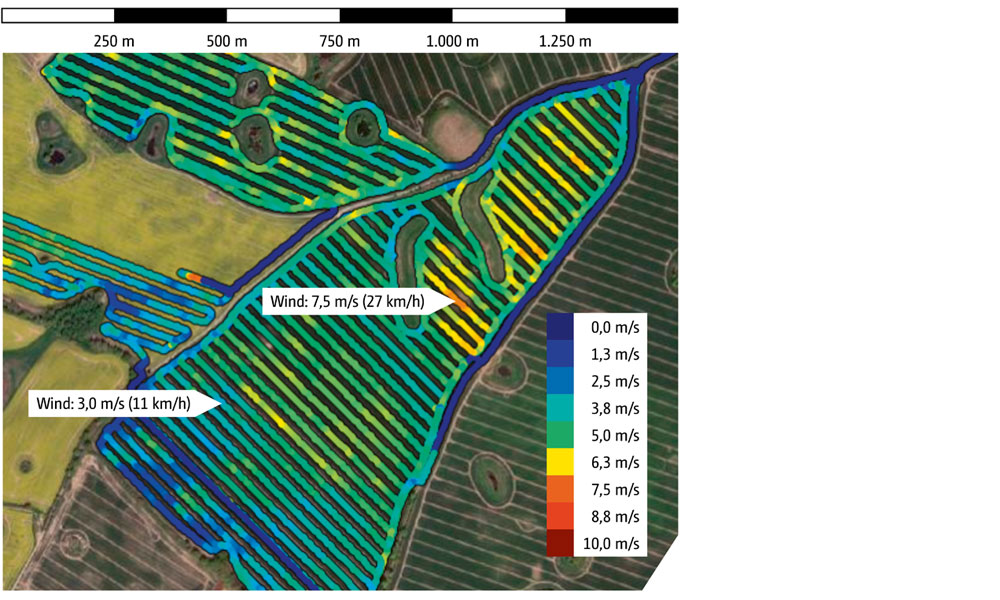WindControl - Calm conditions at the touch of a button
The effect of the wind on the spread pattern can be permanently monitored and automatically compensated for by WindControl. A high-frequency wind sensor mounted on the machine records both the wind speed and the wind direction and transmits this information to the job computer. It uses this data to calculate new setting values for the delivery system and spreading disc speed, which are then automatically adjusted. If there is a side wind, the speed of the side facing the wind is increased and the delivery system is turned outwards. At the same time, the speed of the side facing away from the wind is reduced and the delivery system is turned inwards. As a result, the wind effect is automatically compensated for, thereby ensuring optimum lateral distribution.
WindControl in practice: The economic efficiency
Key data and information
- Field size 70 ha
- Wind speeds of up to 27 km/h
- WindControl improves the lateral distribution across 70 % of the area*
- This means an additional yield of 24 €/ha as a result of WindControl*
* Results based on long-term trials
Example farm:
- Size of farm: 500 ha
- Average wheat yield: 7.8 t/ha
- Average profit: 280 €/t
The wind is always blowing during the spreading season. Wind speeds of up to 27 km/h were measured on the 70 ha field during spreading. An average wind speed of 14 km/h was recorded. WindControl compensated for the effect of the wind on 70 % of the area during spreading, thereby optimising the lateral distribution by 5.6 %. Only 30 % did not require optimisation. This results in improved nutrient distribution and more uniform crops.
Based on long-term trials, which investigated the relationship between fertiliser distribution and the effect on yields, this provides an additional yield of ~1.1 % (Δ CV 5% = 1 % increase in yield). This corresponds to an additional revenue of 24 €/ha as a result of WindControl.
